Images for Print and Posters
So you want to print your pictures?
Most large scale prints have a limited practical resolution, so the size of the print will determine how many Megapixels will be needed to have a good print.
Printers do not have it easy. Replicating the colors that you see on paper requires some serious hocus pocus. There is also the issue of how the picture will look like after some time has passed. While most printing systems look very similar, they are quite different in the way they bring the ink to the paper. The paper is probably one of the more interesting options. For smaller prints (photo)paper is probably the only sensible choice, but for larger prints, there are also options like brushed aluminum, acrylic glass, canvas that are not technically all paper.
However the end result is that they all need a certain resolution so that the print appears to the eye as a nice picture and not some collection of fuzzy rectangles. For print the term DPI is very common, and it tells us how many dots (pixels) are printed per inch. Basically you are OK if you are above 150 dpi, good at 200dpi and great at 300dpi. The most common print format is the so called 4x6 (because it is 4 inches by 6 inches, or approximately 10cm by 15cm), and you can easily see that a picture 1800 pixels by 1200 pixels (that is about 2 Megapixels) would print great, and all the pictures on this wiki (1280 pixels wide) would be very good. Any more, the software that will be used for the printing process will just take them away.
This poster is hanging on my wall
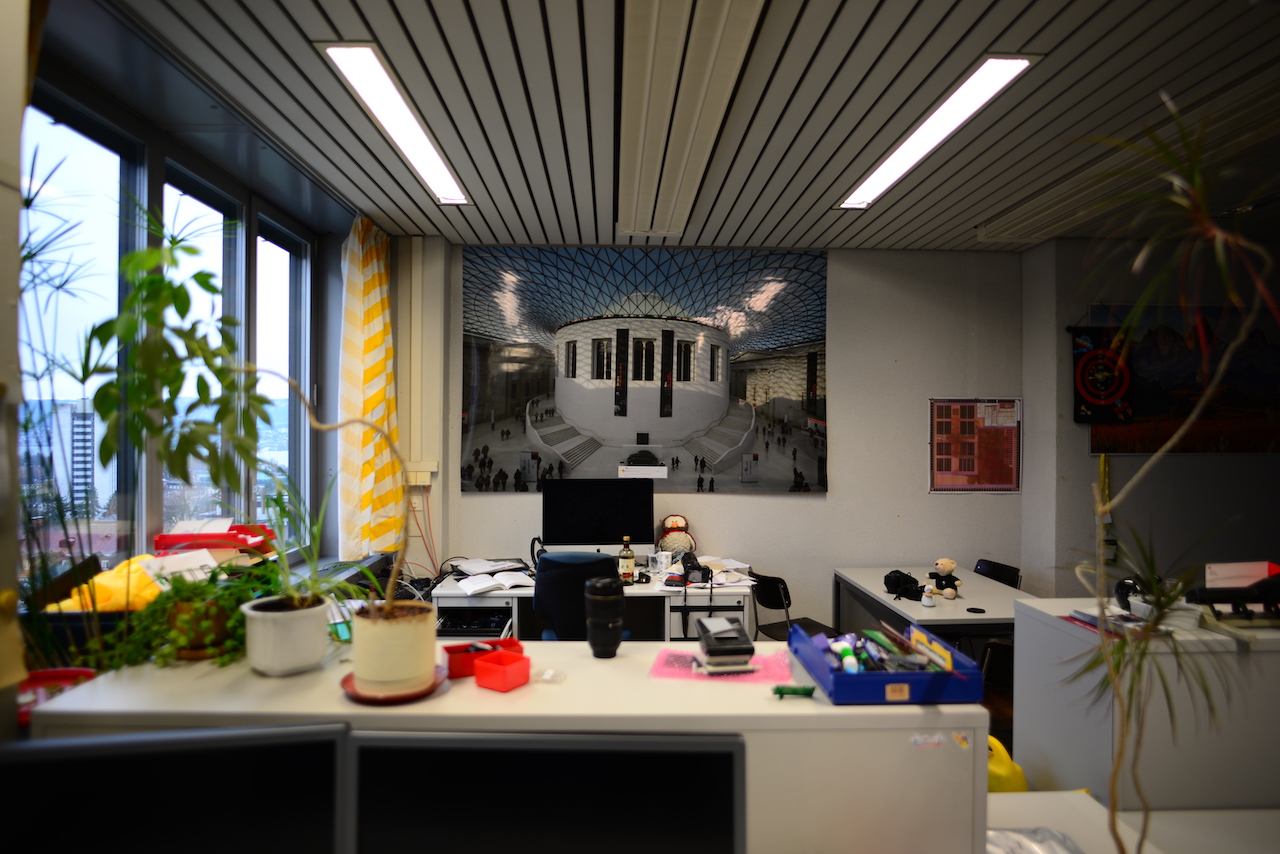 It is about 2meters wide and about 1.5meters high, it is quite an eye catcher.
It is about 2meters wide and about 1.5meters high, it is quite an eye catcher.
I used the following picture, which in original was 24 Megapixels (6000x4000). The poster size is a bit less high, so there was some cropping to obtain the final picture.

You will notice that it is not the best picture, it isn't even particularly sharp, but it still works. Instead of obsessing about technical details, gain some experience in understanding how much you actually need. If you do the math, you will see that the print has actually less than 100 DPI. But it looks great. There are a couple of points for this:
- If you have a print of this size, you actually look at it from a distance, unless you come close, you will not see the individual pixels. If you come across a large billboard, approach it and see how coarse the pictures are up close. Basically it would not look much different if this print was 300dpi if you look at it from 5meters.
- All printing services will do some processing to make sure that the print comes out ok. They can easily resize the image as long as it has a smooth transition which is almost always the case with photographs.
The following is from the Europractice activity report from 2019 printed on high quality glossy paper.

If you measure the size of the print you will realize that it measures about 3 inches long.
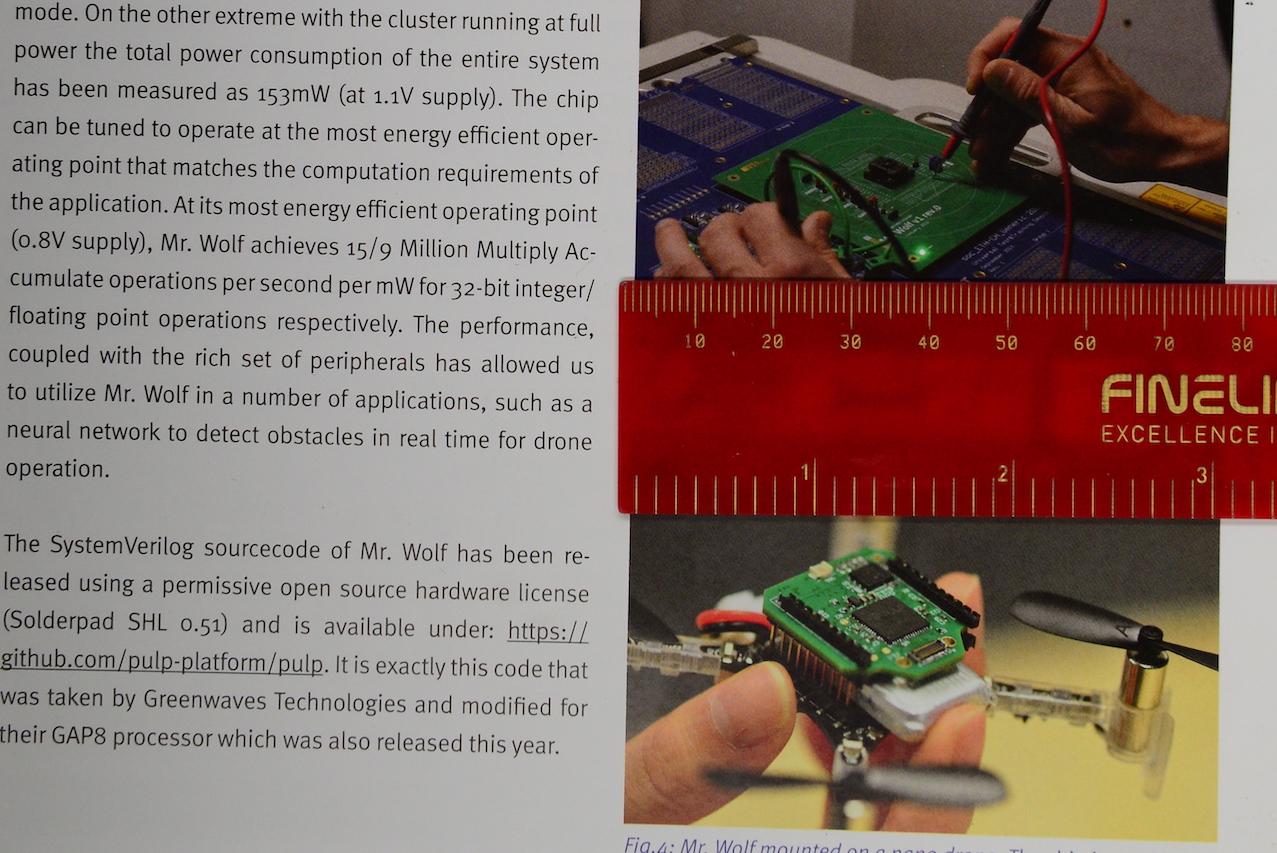
Let us zoom close to the picture of the print, the ruler at the bottom shows millimeters

And if we zoom even closer you can see the individual dots from the print. Notice the colors are yellow, cyan, and magenta, not red, green, and blue. The ruler is again in millimeters. What you see is a bit less than 0.2 inches (5.12mm), you can discuss about the DPI but it is effectively around 200 DPI.
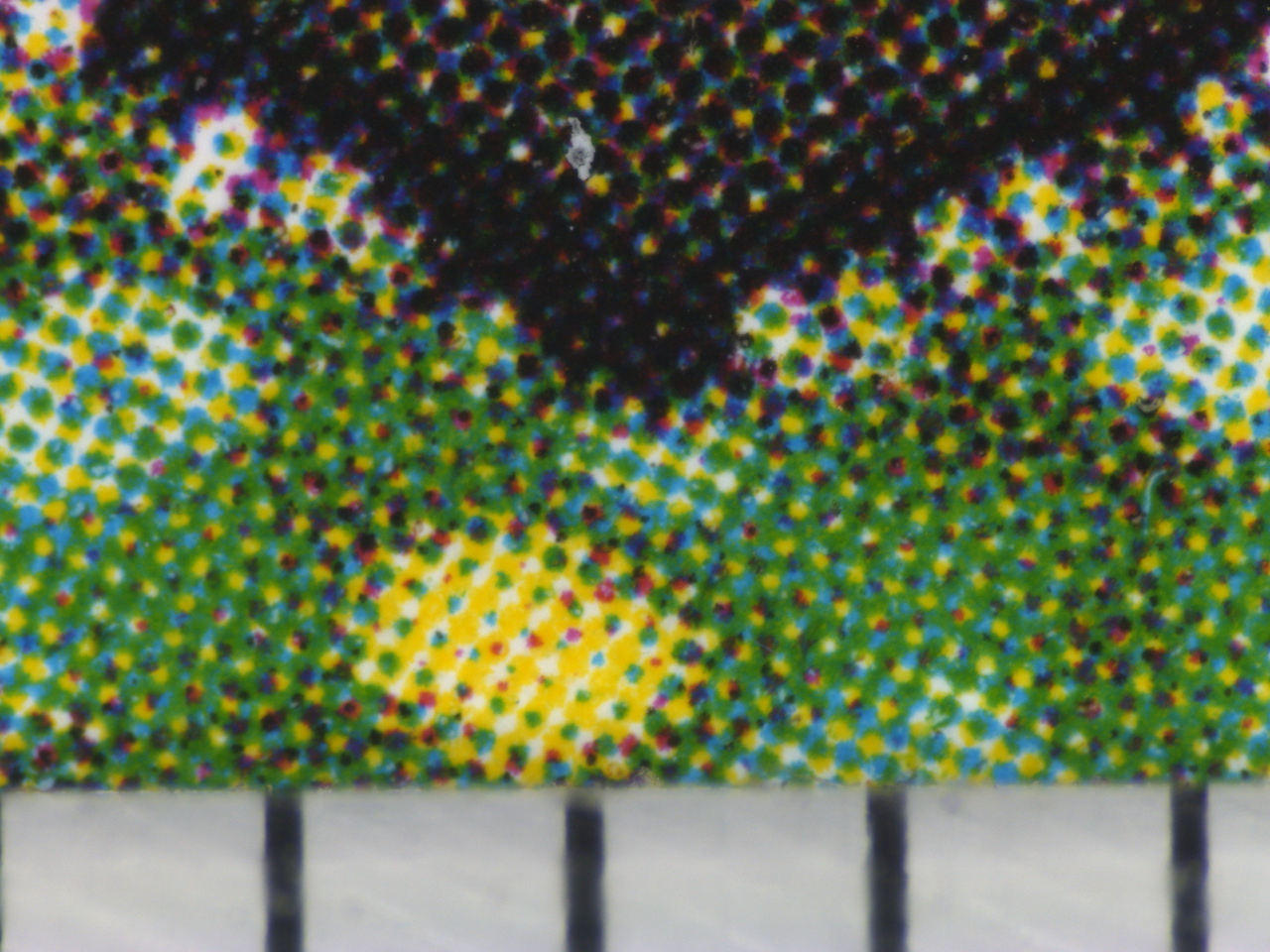
This is the actual image I used for the print. The original is a 12 Megapixel image shot by a Nikon D700.
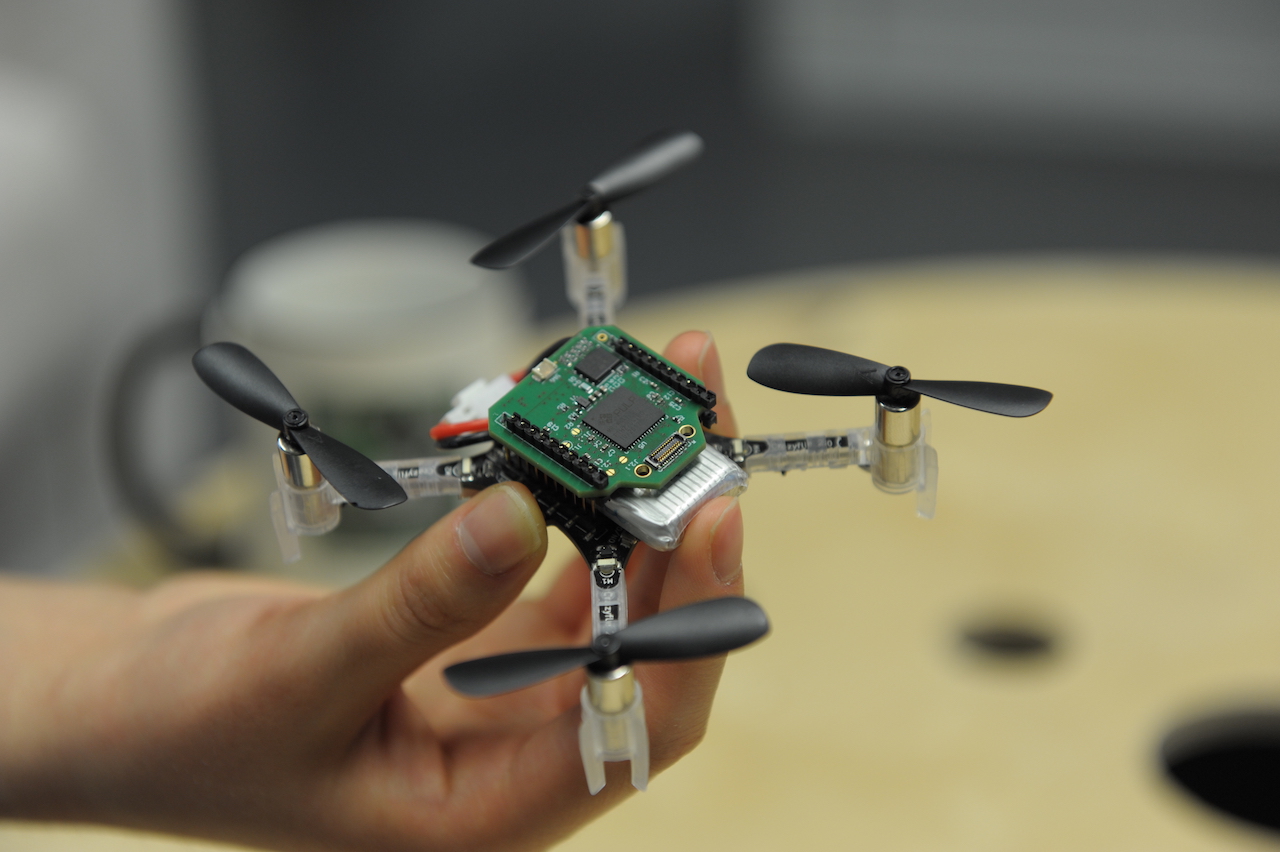
And finally this is the 1:1 crop from the image around the same part that I have above (1280 x 850 pixels). You will notice that I have more than enough resolution to be printed without any issues.
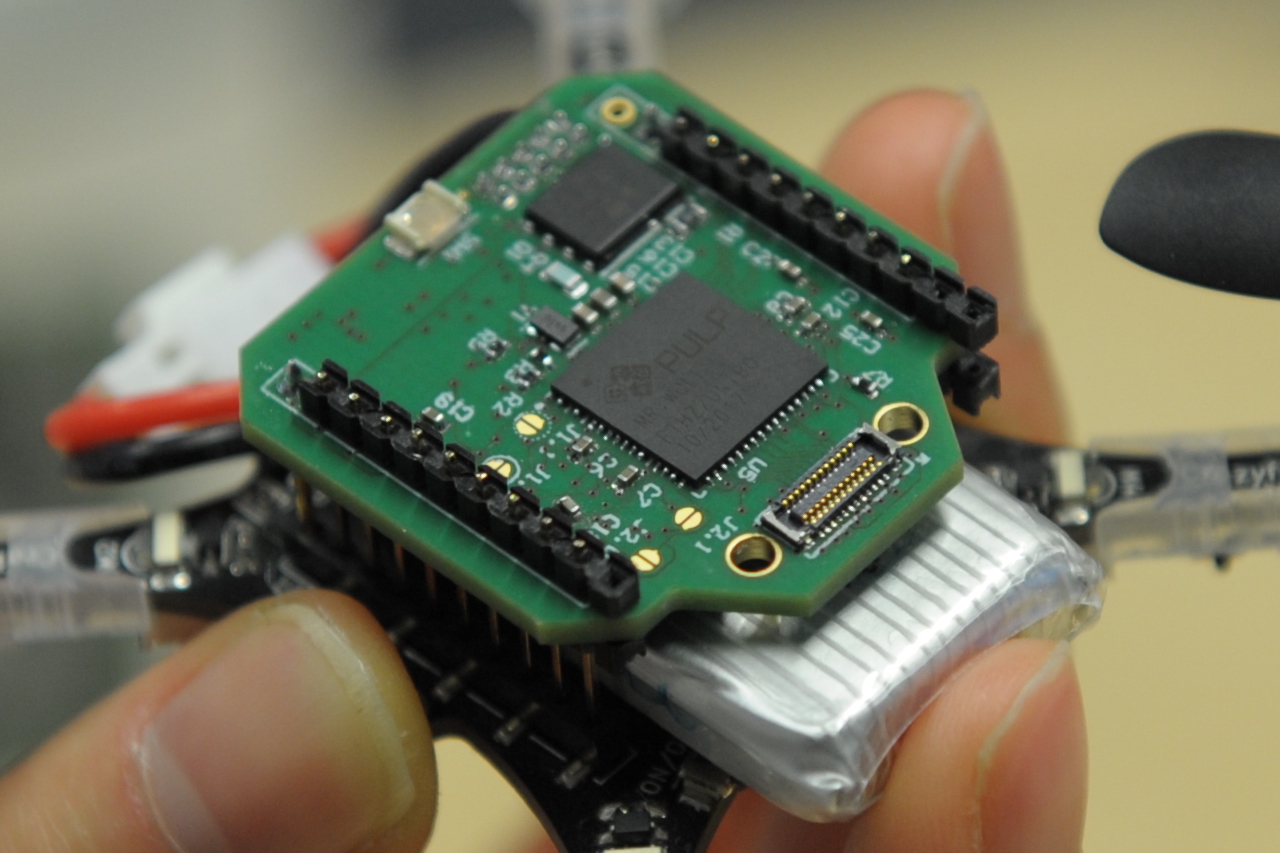
Basically 1 Megapixel for a 3inch image, and you will not notice anything even if you look closely.
Here are some of the more common media that you might want to print to. Do not be fooled by the DPI. Things that you look closer to would probably require a higher DPI (like 300) and things that are printed larger, will easily get away with much lower. The table below has the (approximate) sizes marked in bold for what I think would work well. Of course your mileage may vary.
| Type | Size | Size for 150 DPI | Megapixels | Notes |
|---|---|---|---|---|
| 4x6 | 10cm x 15cm | 900 x 600 | 0.6 | Most common print size |
| 5x7 | 13cm x 18cm | 1'050 x 750 | 0.8 | Larger photo prints |
| A5 | 15cm x 21cm | 1'250 x 900 | 1.1 | Half a regular page |
| A4 | 21cm x 30cm | 1.750 x 1'250 | 2.2 | Regular paper |
| A3 | 30cm x 42cm | 2'500 x 1'750 | 4.4 | Really big paper |
| Newspaper | 60cm x 75cm | 4'500 x 3'500 | 15.6 | Broadsheet |
| Type | Size | Size for 200 DPI | Megapixels | Notes |
|---|---|---|---|---|
| 4x6 | 10cm x 15cm | 1'200 x 800 | 1.0 | Most common print size |
| 5x7 | 13cm x 18cm | 1'400 x 1'000 | 1.4 | Larger photo prints |
| A5 | 15cm x 21cm | 1'660 x 1'160 | 1.9 | Half a regular page |
| A4 | 21cm x 30cm | 2'300 x 1'660 | 3.9 | Regular paper |
| A3 | 30cm x 42cm | 3'300 x 2'300 | 7.7 | Really big paper |
| Newspaper | 60cm x 75cm | 5'900 x 4'700 | 27.7 | Broadsheet |
| Type | Size | Size for 300 DPI | Megapixels | Notes |
|---|---|---|---|---|
| 4x6 | 10cm x 15cm | 1'800 x 1'200 | 2.0 | Most common print size |
| 5x7 | 13cm x 18cm | 2'100 x 1'500 | 3.2 | Larger photo prints |
| A5 | 15cm x 21cm | 2'500 x 1'750 | 4.3 | Half a regular page |
| A4 | 21cm x 30cm | 3'500 x 2'500 | 8.7 | Regular paper |
| A3 | 30cm x 42cm | 5'000 x 3'500 | 17.3 | Really big paper |
| Newspaper | 60cm x 75cm | 8'850 x 7'000 | 62.4 | Broadsheet |
You will see that you do not need that many Megapixels for getting very good looking prints.
These pages are for Amateur Photographers and not really for seasoned photographers and professionals. I have no affiliation or commercial interest with any brand/make. I write from my own experience. I ended up using mainly Nikon, so I am more familiar with this brand than others. See price for notes on pricing as well as photography related links.